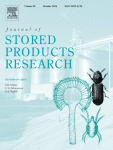Ver ítem
- xmlui.general.dspace_homeCentros Regionales y EEAsCentro Regional Buenos Aires SurEEA BalcarceArtículos científicosxmlui.ArtifactBrowser.ItemViewer.trail
- Inicio
- Centros Regionales y EEAs
- Centro Regional Buenos Aires Sur
- EEA Balcarce
- Artículos científicos
- Ver ítem
Storage of WDGS under hermetic and non-hermetic conditions : effect on sensory properties, microorganisms, mycotoxins and nutritional value.
Resumen
WDGS production in Argentina substantially increased in the last 5 years and become a frequent constituent for feed diets. However, due to the extremely high moisture content of the product, quality deterioration occurs in a few days under aerobic conditions; which creates a series of logistical problems for expanding the use of WDGS far away from production plants. Silo bag technology, a flexible hermetic storage system extensively used in Argentina,
[ver mas...]
WDGS production in Argentina substantially increased in the last 5 years and become a frequent constituent for feed diets. However, due to the extremely high moisture content of the product, quality deterioration occurs in a few days under aerobic conditions; which creates a series of logistical problems for expanding the use of WDGS far away from production plants. Silo bag technology, a flexible hermetic storage system extensively used in Argentina, could be a good alternative for extending the storage time of WDGS. Thus, the main goal of this research was to compare the effect of hermetic and non-hermetic storage of WDGS using several quality parameters. Samples of WDGS from three different ethanol production plants were stored in hermetic (small scale silo bags) and non-hermetic conditions at 16 °C (60 days hermetic and 20 days no-hermetic). WDGS quality evolution was evaluated through sensory, microbiological, biochemical, nutritional and toxicological parameters. Results indicated that in the non-hermetic treatment, even though no evidence of nutritional quality losses was found in the mass of WDGS, spoilage developed at the surface after 10 day of storage. Additionally, evidence of mycotoxin formation was found (DON) during aerobic storage, implying that mycotoxin tests should be routinely implemented. On the contrary, hermetic storage in silo bag allowed a proper ensiling process, extending the shelf life of the product and preventing mycotoxins development for at least 60 days.
[Cerrar]

Autor
Alvarez, Estefanía;
Cardoso, Marcelo Leandro;
Depetris, Gustavo;
Castellari, Claudia Carla;
Cristos, Diego Sebastian;
Montiel, María Delfina;
Bartosik, Ricardo Enrique;
Fuente
Journal of Stored Products Research 80 : 65-70 (January 2019)
Fecha
2019-01
Editorial
Elsevier
ISSN
0022-474X
Formato
pdf
Tipo de documento
artículo
Palabras Claves
Derechos de acceso
Restringido
 Excepto donde se diga explicitamente, este item se publica bajo la siguiente descripción: Creative Commons Attribution-NonCommercial-ShareAlike 2.5 Unported (CC BY-NC-SA 2.5)
Excepto donde se diga explicitamente, este item se publica bajo la siguiente descripción: Creative Commons Attribution-NonCommercial-ShareAlike 2.5 Unported (CC BY-NC-SA 2.5)

